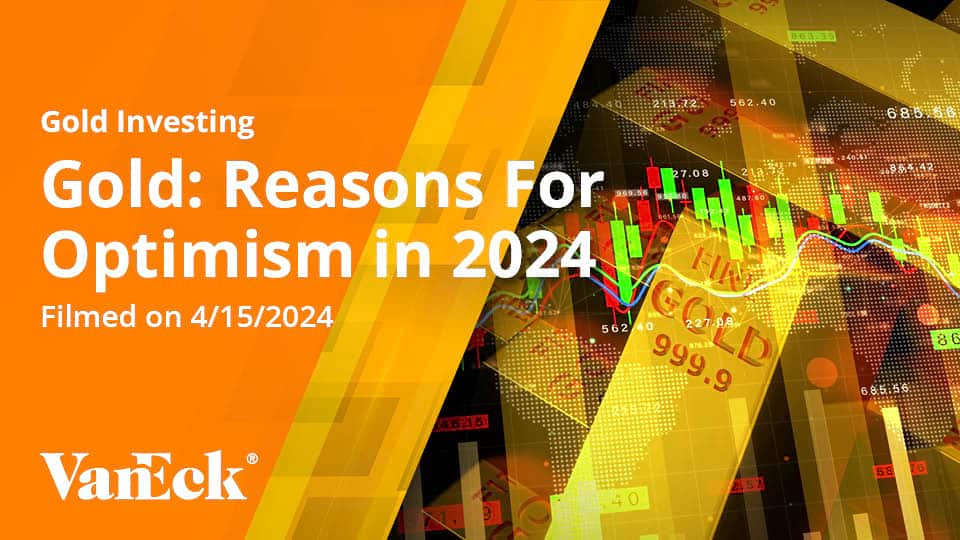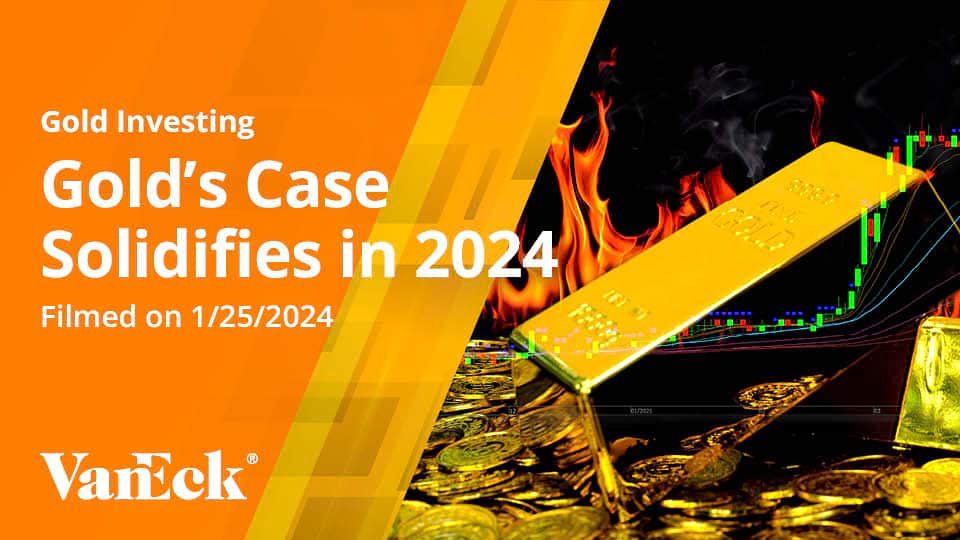In the Inflation/Reflation Debate, Gold Could Win
09 February 2021
Read Time 6 MIN
Reflation Trade
Gold had a strong start to the year, moving to its monthly high of $1,959 per ounce on January 6 at the same time the U.S. dollar index (DXY)1 made fresh three-year lows. However, gold quickly reversed course as it became clear the democrats had won a runoff election in Georgia, which, with the help of a democratic vice president, gave them control of the Senate. With this crucial victory, the markets quickly embarked on a “reflation trade”, betting that the democrats would pass trillions of dollars of additional spending on pandemic relief, infrastructure and green initiatives. Interest rates spiked higher, taking ten-year treasuries to a ten-month high of 1.18% on January 12. The rise in rates bolstered the U.S. dollar, driving the DXY to its monthly high on January 18, while gold fell to its monthly low of $1,804.
We had thought such a victory for the democrats would be positive for gold because it might lead to more deficit spending, higher taxes and more regulations. However, the near-term rise in yields and the dollar overwhelmed the longer-term implications, at least for now. Gold trended higher in the second half of the month as rates and the dollar eased. Gold ended the month at $1847.65 for a $50.71 (2.7%) loss. The NYSE Arca Gold Miners Index2 (GDMNTR) fell 3.8%, and the MVIS Global Junior Gold Miners Index3 (MVGDXJTR) lost 7.0%.
Hi Ho Silver!
Gold also gained support at month-end when trading excitement broke out in silver. Reddit, a popular online community hosts the WallStreetBets forum, where retail investors and day traders exchange ideas. Early in the month, investors using Reddit targeted electronic game store GameStop Corp. and other relatively small companies with large short interest as buying opportunities. The retail buying and short covering by hedge funds drove GameStop to a 1,625% gain in January. On January 28, the Reddit traders turned their attention to silver, which they allege is being suppressed by banks to mask inflation. As of February first, over the past three trading days, silver has gained 15% to $29 per ounce, the Solactive Global Silver Miners Index4 gained 23%, and individual silver stocks have gained as much as 59%. Trading volumes and inflows to silver bullion exchange traded products have exploded higher.
Manipulation No Match For Fundamentals
It’s a big stretch for the Reddit traders to go from targeting a small stock with enormous short interest like GameStop to targeting the multi-billion dollar silver industry. It appears that their investment decisions focus on conspiracy theories, social justice and mob rule rather than commodity and industry fundamentals. Nonetheless, they represent a new type of investor to silver that may enable it to trade at higher levels. Silver has been in a bull market with gold, so we don’t see it in a short squeeze. In fact, net speculative positioning in silver futures has been long for over a year. The gold/silver ratio is currently at 68, which is near the ten-year average of 70. The ratio hit a low of 31 in 2011 when silver reached its all-time high of $49.80. Also, silver only reached $30 per ounce when gold was making new all-time highs last August. Therefore, higher silver prices here would be well within historic norms. However, many silver stocks are now trading at extraordinary multiples and may pull back once the Reddit frenzy has run its course.
Reddit/WallStreetBets is the first black swan phenomenon since the COVID crash. It is the unintended consequence of radical government policies that drove rates to zero, created trillions of dollars of free money and a society with copious free time. A free market system cannot achieve its function of price discovery and efficient capital allocation if it is subjected to manipulation, government mandates or mob rule. Free markets have been weakened by Reddit/WallStreetBets. In the current environment, the next black swan may bring more ominous damage to the financial system.
Reflation vs. Inflation
There has been a lot of talk in the press of inflation since the democrats have taken control of Washington. We find this misplaced, as there is a difference between reflation, which is stimulating the economy to get back to normal growth, and excessive inflation, which is a rise in wages and prices. The chart shows that inflation expectations have simply returned to normal levels of around two percent, where they have been for decades. The chart also shows how inflation expectations cratered with the deflationary shocks of the financial crisis in 2008 and the COVID crisis in 2020. In both crisis, inflation expectation rebounded to historic norms. Gold is not reacting to inflationary pressures because there is not yet any evidence of excessive inflation.
U.S. Market Inflation Expectations (5 Years Ahead)

Source: Bloomberg. Data as of December 2020.
Inflation: Case For vs. Case Against
Here, we contrast the cases for and against inflation.
Case for inflation:
- Shortage of manufacturing workers caused by new e-commerce jobs with higher wages
- The end of cheap labor in China and Asia in general
- The pandemic has reduced capacity in many industries
- The pandemic has also reduced the pace of globalization and international trade
- A savings glut and pent-up demand will bring a surge in post-pandemic spending
- The Fed can never raise rates for fear of crashing the stock market and making debt service unbearable
- The Fed has adjusted policies to enable inflation above its two percent target
- It is hard to believe the shift to concerted fiscal/monetary stimulus on an unprecedented scale won’t bring an inflationary cycle
- The last time we saw such stimulus in the U.S. was in response to the depression and WW ll, which brought an inflationary cycle in which the annual change in the CPI peaked at 19.7% in March of 1947
Case against inflation:
- With the pandemic, spending has focused on goods, so future demand has been satiated
- There is no pent-up demand in services, only a return to normal; you only need one haircut or you might take that cruise, but not five cruises
- High levels of unemployed will act as an ongoing drag on wages
- Accelerating technological change will keep the cost of goods in check
- The U.S. Federal Reserve (Fed) has been trying to generate inflation for over a decade without success
- Excessive debt and aging demographics will keep a lid on growth
- Millions of households are behind on rent and mortgage payments
- A savings glut reflects more conservative consumers traumatized by the pandemic that spend less
- Negative rates, massive QE and fiscal stimulus have failed to prompt inflation in Japan for decades recently, Japan has been in deflation for three months
And The Winner Is...Gold
Weighing the pros and cons, we believe history provides the best guide. The Japan model makes a compelling case against inflation; however, the post-WWll model makes an inflationary cycle the most likely outcome, given the overwhelming stimulus efforts. This would be the most bullish for gold, although, a low growth, low inflation outcome presents abundant risks that could also drive gold for years. Such risks include debt problems, even more radical fiscal and monetary policies, worsening income disparity and social unrest.
Related Insights
IMPORTANT DEFINITIONS & DISCLOSURES
This material may only be used outside of the United States.
This is not an offer to buy or sell, or a recommendation of any offer to buy or sell any of the securities mentioned herein. Fund holdings will vary. For a complete list of holdings in VanEck Mutual Funds and VanEck ETFs, please visit our website at www.vaneck.com.
The information presented does not involve the rendering of personalized investment, financial, legal, or tax advice. Certain statements contained herein may constitute projections, forecasts and other forward looking statements, which do not reflect actual results. Information provided by third-party sources are believed to be reliable and have not been independently verified for accuracy or completeness and cannot be guaranteed. Any opinions, projections, forecasts, and forward-looking statements presented herein are valid as of the date of this communication and are subject to change without notice. The information herein represents the opinion of the author(s), but not necessarily those of VanEck.
The views contained herein are not to be taken as advice or a recommendation to buy or sell any investment in any jurisdiction, nor is it a commitment from Van Eck Associates Corporation or its subsidiaries to participate in any transactions in any companies mentioned herein. This content is published in the United States. Investors are subject to securities and tax regulations within their applicable jurisdictions that are not addressed herein.
All investing is subject to risk, including the possible loss of the money you invest. As with any investment strategy, there is no guarantee that investment objectives will be met and investors may lose money. Diversification does not ensure a profit or protect against a loss in a declining market. Past performance is no guarantee of future results.

